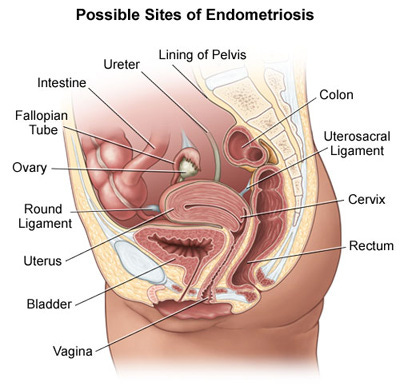Endometriosis- Why is it often missed by doctors?
The symptoms and treatments for this painful condition that's commonly misdiagnosed.
Endometriosis
/ˌendōˌmētrēˈōsəs/
a condition resulting from the appearance of endometrial tissue outside the uterus and causing pelvic pain.
…
What is Endometriosis
Endometriosis is a painful disease caused by endometrial tissue, which lines the inside uterus, growing in other parts of the body. About 10% of reproductive-age women have endometriosis (UCLA Health). Someone suffering from endometriosis may have patches of tissue develop around the ovaries, fallopian tube, uterus, bowels, bladder, and cavity that holds the uterus.

Symptoms and Risk Factors
People experiencing endometriosis report experience severe pelvic pain, infertility, menstrual cramps, pain during or after sex, and heavy periods. The risk for endometriosis is high for people with a family history of the condition, started their period before age 11, have monthly menstrual cycles shorter than 27 days, or have heavy menstrual cycles that last more than 7 days (NIH).
Treatment
Endometriosis is often a painful and debilitating condition. To treat pain, a healthcare provider may suggest taking pain relievers, hormone therapy (like birth control or GnRH agonist) and surgical treatment to remove tissue patches. Endometriosis often causes infertility and about 20-40% of women suffering from infertility have endometriosis (UCLA Health). To help manage infertility, a healthcare provider may suggest a laparoscopy surgery to remove tissue patches and IVF (NIH).
—Written by Sabrina Park (MPH Candidate USC). Reviewed by Adriana Bakhoum MPH
References



